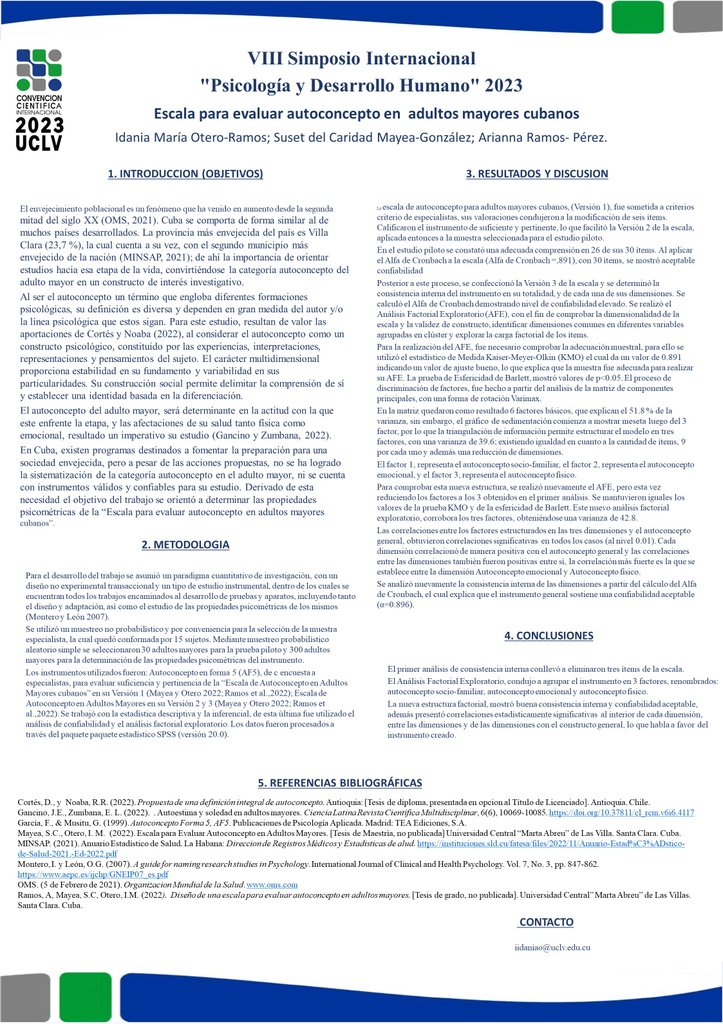Executive Secretary

VIII Simposio Internacional "Psicología y Desarrollo Humano" 2023

Objetivo: Determinar las propiedades psicométricas de la “Escala para evaluar autoconcepto en adultos mayores cubanos”. Metodología: El paradigma de investigación fue cuantitativo, con un diseño no experimental y un tipo de estudio instrumental. La muestra quedó conformada por 15 especialistas para valorar la suficiencia y pertinencia del instrumento, 30 adultos mayores para la prueba piloto y 300 adultos mayores para la determinación de las propiedades psicométricas del instrumento. De la estadística inferencial fue utilizado el análisis de confiabilidad y el análisis factorial exploratorio. Resultados: Se constataron niveles de confiabilidad aceptables del instrumento, una estructura factorial coherente, compuesta por tres factores : autoconcepto socio-familiar, autoconcepto emocional y autoconcepto físico, así como adecuadas correlaciones inter-ítems y entre las dimensiones. Conclusiones: Se expresaron correlaciones estadísticamente significativas al interior de cada dimensión, entre las dimensiones y de las dimensiones con el constructo general, lo que habla a favor del instrumento creado. La escala ha sido aplicada en diferentes contextos, facilitando intervenciones psicoeducativas.
Objective: Determine the psychometric properties of the “Scale to evaluate self-concept in older Cuban adults.” Methodology: The research paradigm was quantitative, with a non-experimental design and an instrumental type of study. The sample was made up of 15 specialists to assess the sufficiency and relevance of the instrument, 30 older adults for the pilot test and 300 older adults to determine the psychometric properties of the instrument. Reliability analysis and exploratory factor analysis were used for inferential statistics. Results: Acceptable levels of reliability of the instrument were demonstrated, as well as a coherent factorial structure, composed of three factors: socio-familial self-concept, emotional self-concept and physical self-concept, as well as adequate inter-item correlations and between the dimensions. Conclusions: Statistically significant correlations were expressed within each dimension, between the dimensions and of the dimensions with the general construct, which speaks in favor of the instrument created. The scale has been applied in different contexts, facilitating psychoeducational interventions.
Sobre el ponente

Idania Otero Ramos

Discussion